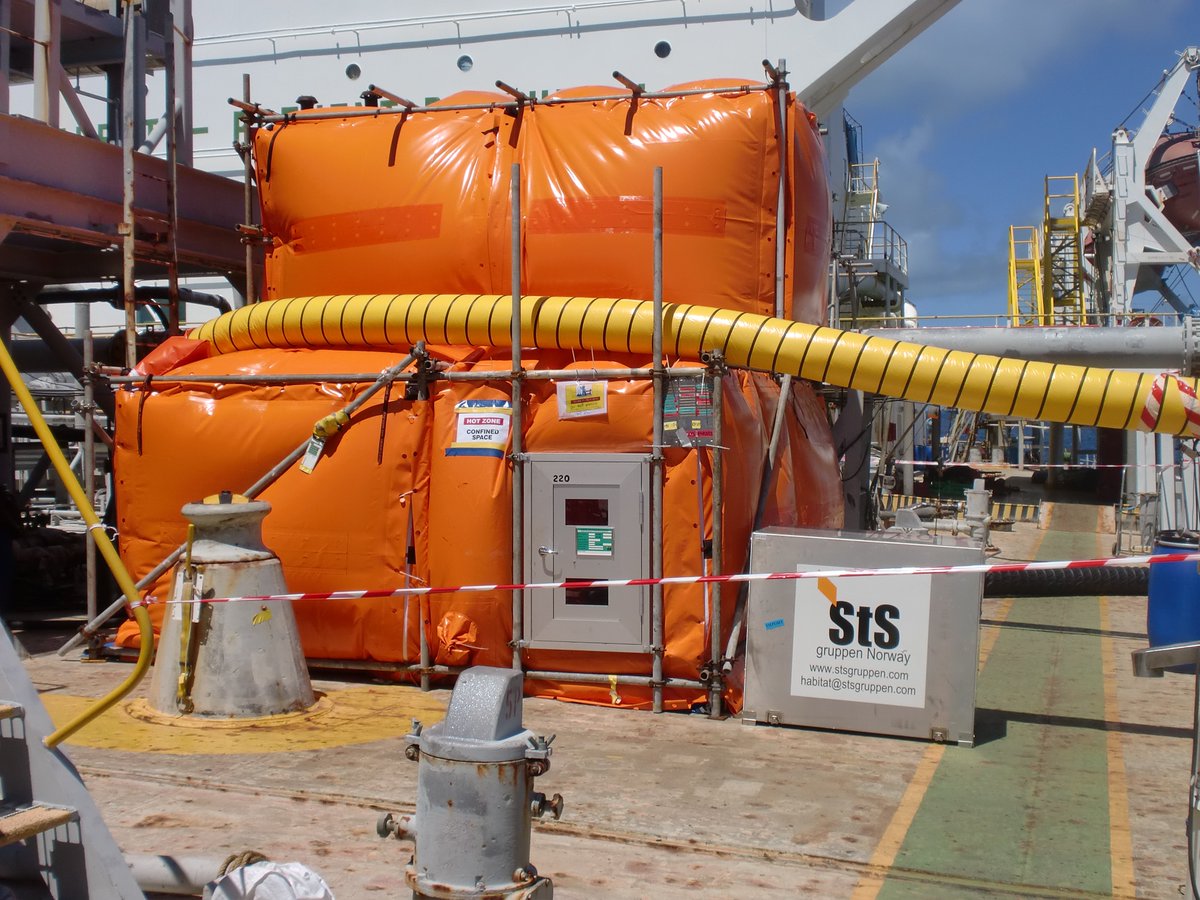 Purpose
Purpose
Pressurised Habitat is a positive pressure enclosure created especially for doing hot work in area where there is presence of explosive atmosphere. It is generally set up in petrochemical plants or on offshore oil and gas platforms.
Once this pressurized welding enclosure is constructed, there is need to have air change to maintain quality atmosphere inside the enclosure so that worker’s health is not compromised. Also atmosphere inside the enclosure should have no flammable atmosphere so continuous monitoring of the flammable gases is required.
This is where a dedicated pressurized habitat technician comes in.
Target Audience
Industrial electrician, Safety officers and Line managers working in any petrochemical industry or offshore oil and gas exploration.
Course content
Standards & Certification
IEC Standard
Positive pressure enclosures, or “welding habitats” are working on the principle of overpressure. This protection principle is regulated by IEC standard 60079-13:2017 Equipment protection by pressurized room “p”. The IEC60079-13 standard forms the bases of welding habitat certification to the ATEX directive 2014/34/EU (mandatory for Europe), and the IECEx equipment certification scheme. The IEC60079-13 standard is adopted into national certification standards by changing the prefix to the applicable national prefix i.e. IEC60079-13 becomes BS EN 60079-13 (UK), or CAN/CSA C22.2 No 60079-13 (Canada), ANSI/UL 60079-13 (USA) etc. There may be some national foreword added to the IEC60079 series standard, but the main content of these national version of the IEC standards are identical to the IEC standard.
ATEX Certification
ATEX certification is the national certification standard of the European Union, and mandatory to operate equipment in explosive atmosphere in Europe. ATEX certification is not based on the IECEx certification scheme, certification is bases on the ATEX directive 2014/34/EU – see main article. Under the ATEX 2014/34/EU Directive, all equipment requires a proper manufacturer’s EU Declaration of Conformity. For Zone 1 welding habitats this EU Declaration of Conformity must be based on a Notified Body issued EU–Type Examination Certificate for pressurized habitats (rooms) EN 60079-13.
Pressurised habitat certification is not about the individual component compliance – that’s a given – it is about what the habitat as a system does: completely separating potential explosive atmosphere from hot work using a controlled overpressure system combined with an automatic shutdown unit certified to IEC60079-13.
Operating principles
Flammability limits
Flammable gases are not generally explosive under all conditions, and indeed, must be present within specific ranges in order to be explosive, or flammable. Additionally, oxygen must be present. The flammability limits of gases are expressed in proportions to the other gases present. For example, for methane, the lower explosive limit (LEL) is 4.4% and the upper explosive limit (UEL) is 17%. A positive pressure enclosure works by making sure that the methane present in the work area never approaches the 4.4% LEL.
Positive pressure
The operating pressure inside a typical isolation chamber is set only marginally above local pressure; typically only 0.05 kilopascals (about 0.007 pounds per square inch) above local atmospheric pressure. This is sufficiently low to be undetectable (a person sitting in a bathtub full of water is exposed to greater pressures) to operators working inside the enclosure, but due to the leaky nature of the unit, ensures that the volume of air inside is constantly and rapidly changing. Intake air is piped into the enclosure by fan units.
Air Quality Assurance
The air exchange rate inside the habitat should be maintained above 20 cycles per hour in compliance with Factories and Machineries Act (Safety, Health and Welfare) Regulation 1970, under Regulation 25 – Ventilation. Air flow inside the habitat should be arranged in one-direction airflow with the inlet (at floor level) and outlet (at top level) at the furthest and opposite side. The ventilation flow rate of the habitat shall be 2,000 cfm from a clean source, per welder to dilute the polluted air inside the habitat.
Positive Pressure Assurance
A minimum positive pressure of 0.1 inch of water or 0.00025 bar (equivalent to 25 Pascal or 0.00363 PSI) shall be maintained inside the Habitat enclosure to prevent ingestion of hydrocarbon in the event of leak occurred outside.
Heat Stress (Working Temperature)
Maximum allowable temperature inside the Habitat enclosure is 40 Deg C. Work must stop when the temperature inside has reached above this allowable threshold. This is to prevent heat stress exposure of those working inside.
Technician Training and Competency
The pressurised habitat technicians must have attended the habitat manufacturer or operator in-house training on the habitat set-up, operations and basic maintenance. The technician must have attended training on Local Exhaust Ventilation (LEV) and able to calculate air exchange flow rate to ensure fumes generated from welding activity in the enclosure is maintained to acceptable limit.
| Course | Fee INR | Duration | Course Timing | Date Commence | Remarks |
|---|---|---|---|---|---|
| Pressure Habitat Technician | 10,000 | 1 day | 10:00-18:00 | On Demand |
